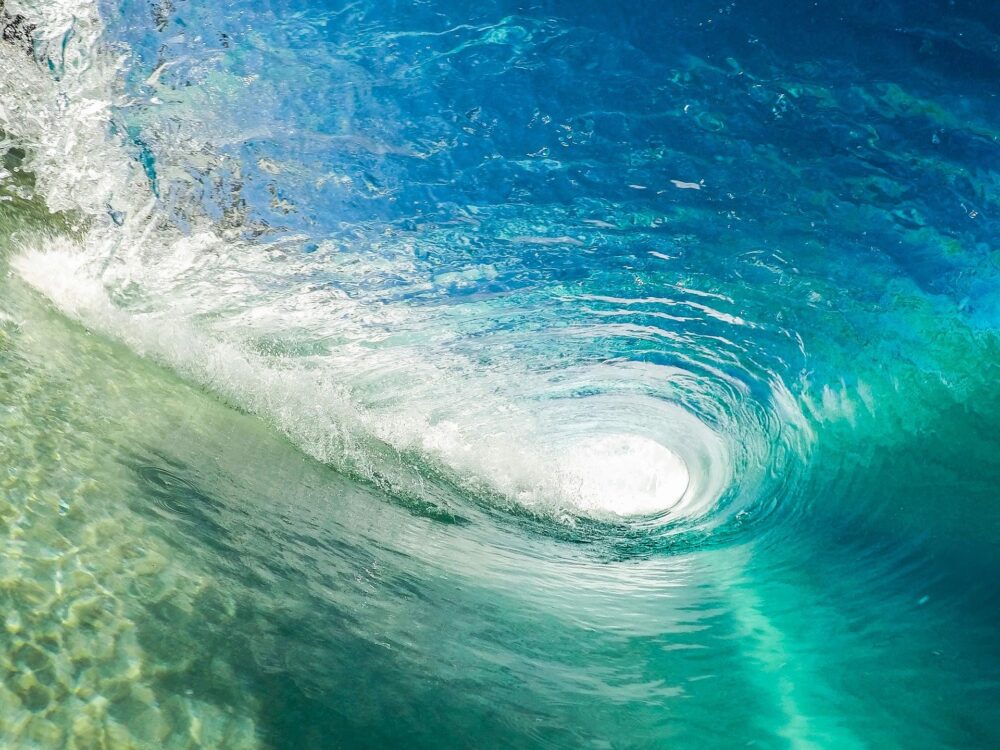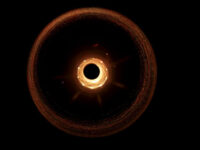How do you conduct a laboratory experiment when your subject can be as wide as 400 AU and as massive as ten billion suns? An international team of scientists at the Black Hole Laboratory at the University of Nottingham faced this question in their study of black holes. Their solution was to simulate a rotating black hole in the lab…with a bathtub.
To start with, what is a black hole? There are two kinds, solar-mass and supermassive black holes, the former of which are created by dying stars. When stars cease to fuse hydrogen at the end of their lifetime, they collapse in on themselves, condensing into a singularity of infinite density. As surrounding material is gravitationally pulled towards the singularity, it passes a point of no return – referred to as the event horizon or Schwarzschild radius. This is the distance at which something must be traveling faster than the speed of light to escape the black hole’s pull. This is why black holes are black. Not even light can escape once it gets too close, so they often look like dark, silent voids in the black of space.
This blackness is what makes black holes so difficult to study. They are detectable through their gravitational effect on the bodies in their vicinity and by X-ray emissions from superheated matter being pulled towards the event horizon, but taking a detailed look at these objects is still extraordinarily hard. So, the researchers decided to get creative: instead of struggling to see small details in the material inflow of barely detectable black holes, they decided to simulate a rotating black hole using a bathtub vortex.
Researchers decided to get creative: instead of struggling to see small details in the material inflow of barely detectable black holes, they decided to simulate a rotating black hole using a bathtub vortex.
Bathroom appliances aren’t exactly top of the line lab equipment, but in this case it perfectly facilitated the research. The team filled a large tank with about two thousand liters of water tinted green with fluorescent dye. This water flows in from two access points at opposite corners of the tank, which sets the whole system spinning when the drain at the center of the tank is unplugged.
This may seem strange at first, but the comparison (for small-scale processes) is nearly perfect. At its simplest, a black hole is a vortex, a spinning whirlpool of matter that drains into the singularity, which can be thought of as an infinitely deep hole.
But even as you increase the complexity of the black hole model, the whirlpool analogy still holds water. If you have ever looked closely at a draining tub, you’ll see interesting ripple patterns along the surface of the water, spiraling and crisscrossing and radially extending wrinkles. This effect, where tiny ripples travelling across the surface of the swirling water interact—a phenomenon called wave propagation—is present in astrophysical black holes as well, and is the reason why scientists are so interested in this experiment.
Even as you increase the complexity of the black hole model, the whirlpool analogy still holds water.
The way a vortex swirls is a fairly well-characterized phenomenon, but the way waves propagate across their surface is not. When you create a disturbance like sticking your finger into a region where the water is not swirling strongly, the waves caused by that disturbance can travel in any direction it pleases.
But the greater the fluid velocity of the region being perturbed, the more those ripples are influenced by the movement of the water. At a certain radius from the drain, the speed at which the water is swirling exceeds the speed of the perturbed wave, and all surface waves, no matter their direction of propagation, are dragged down into the drain. If this sounds familiar, then you have been paying attention! This is the exact definition of a black hole’s event horizon.
The study of black holes has been largely dominated by theoretical work – after all, it’s extraordinarily difficult to cram a ten billion solar mass body into a laboratory. But without experimental corroboration, it is difficult to know whether the theory is correct. This black hole in a bathtub experiment is extremely significant in that it provides that corroboration. Scientists were able to directly measure previously theorized effects such as superradiance, where waves that pass through a black hole emerge with a higher energy than they started with.
As this research proceeds, hopefully scientists continue to shed light on black holes by staring into the void…or in this case, into the eye of a whirlpool.
Sources:
https://www.gravitylaboratory.com/rotating-black-holes
Sam Patrick et al. Black Hole Quasibound States from a Draining Bathtub Vortex Flow, Physical Review Letters (2018). DOI: 10.1103/PhysRevLett.121.061101





